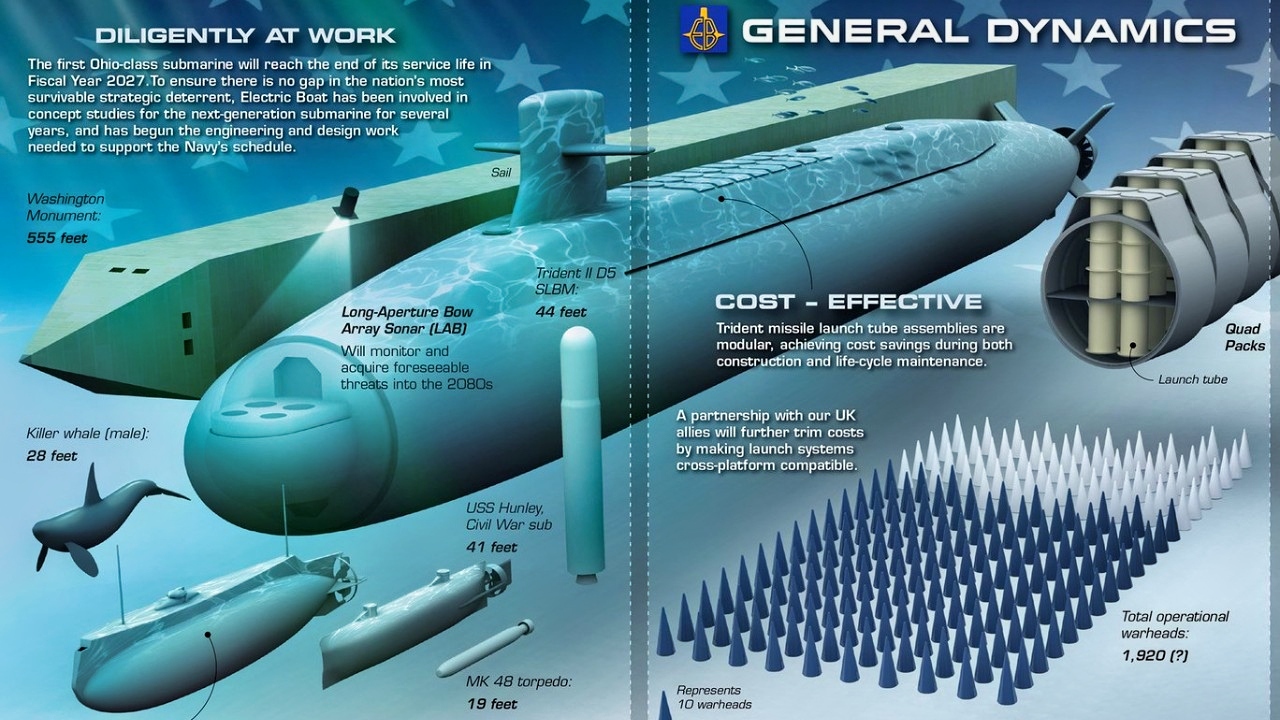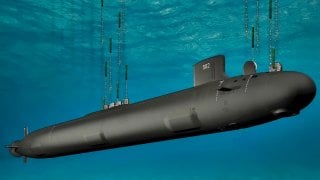Columbia-Class: The U.S. Navy's $13,000,000,000 Submarine Mistake?
The Columbia-class ballistic missile submarines, designed to replace the aging Ohio-class, come with a hefty price tag—around $13 billion per sub. These advanced subs will bolster U.S. nuclear deterrence by maintaining a stealthy, survivable second-strike capability.
What You Need to Know: The Columbia-class ballistic missile submarines, designed to replace the aging Ohio-class, come with a hefty price tag—around $13 billion per sub. These advanced subs will bolster U.S. nuclear deterrence by maintaining a stealthy, survivable second-strike capability.

-Despite the high costs and GAO reports of delays and overruns, the Navy views these expenditures as essential to uphold its nuclear triad.
-The Columbia-class subs incorporate significant innovations, including electric drive propulsion for quieter operations and reactor fuel lasting their entire service life, potentially offsetting some maintenance costs.
-Ultimately, their strategic deterrent value may justify the substantial investment.
The Columbia-Class is Going to Cost at Least $13 Billion Per Boat, is it Worth It?
Budgetary overruns have been a hallmark of military spending for decades. Design changes, production difficulties, and other, unforeseen factors conspire to drive up the cost of new systems before their completion.
The U.S. Navy’s Columbia-class ballistic missile submarines (SSBNs) are proving to be no exception with current estimates placing them at $13 billion per boat, an enormous sum that leads some to question whether they represent a worthy investment.
Columbia-Class Submarine: A Bad Idea?
These new submarines will be the latest SSBNs, replacing the Ohio-class which has served for several decades. Their role is to lurk in the open ocean with their store of nuclear missiles to serve as a reactive force should an adversary carry out a first strike on the U.S. In such a scenario, these stealthy subs would be able to retaliate with a massive nuclear barrage from a hidden location far from shore.
The concept of submarine-launched nuclear missiles is not new. Since 1959, the U.S. Navy has fielded such weapons which has played a large part in global nuclear deterrence. Since 1981, the Ohio-class has served in this role.

Currently, there are fourteen active boats in service with four more reconfigured to launch a large quantity of Tomahawk Land Attack Missiles. As these vessels began reaching the end of their service lives, the Navy started the search for a replacement.
Electric Boat and Newport News Shipbuilding designed the new class for the Navy after proposals to use modified Virginia-class fast attack submarines or new, updated Ohio-class boats were scrapped due to not meeting program requirements. The new submarines will be similar in size to the Ohios however with eight fewer missile tubes.
They will incorporate all the newest bells and whistles to remain relevant over their forty-two-year service life. Unlike the Virginia and Ohio classes, the Columbias will carry enough reactor fuel for their full-service life, preventing a costly mid-life refueling.
One significant change is the incorporation of an electric motor to turn the propellers, instead of the typical mechanical system found on nuclear-powered submarines. Only two prior U.S. subs used this propulsion system, whereby the steam from the reactor turns generators which supply power to the electric motor instead of using the steam and reduction gears to turn the propeller shaft. Theoretically, this drive system is much quieter than the traditional mechanical variant.
Are They Worth It?
As recently as September of this year, the Government Accountability Office (GAO) found that “the first submarine is estimated to be delivered over a year late and cost hundreds of millions of dollars more than planned.” Struggles such as these are not new in military acquisitions however the per-unit cost of these boats has drawn additional scrutiny
Ultimately, the Navy may have no choice but to bite the bullet and accept the higher costs. Ideally, these ships are never used which would seem to make these costs unnecessary, however, their very existence is in some ways what prevents their use.
Indeed, some pundits are even calling for increased production to ensure the Navy’s deterrence posture is unchallenged. As these boats come online, the cost may go down; production lines will become more efficient, and supply bottlenecks will get ironed out. In the meantime, however, the Navy is stuck with the higher bill.
About the Author: Maya Carlin
Maya Carlin, National Security Writer with The National Interest, is an analyst with the Center for Security Policy and a former Anna Sobol Levy Fellow at IDC Herzliya in Israel. She has by-lines in many publications, including The National Interest, Jerusalem Post, and Times of Israel. You can follow her on Twitter: @MayaCarlin.
Image Credit: Creative Commons and/or Shutterstock.


